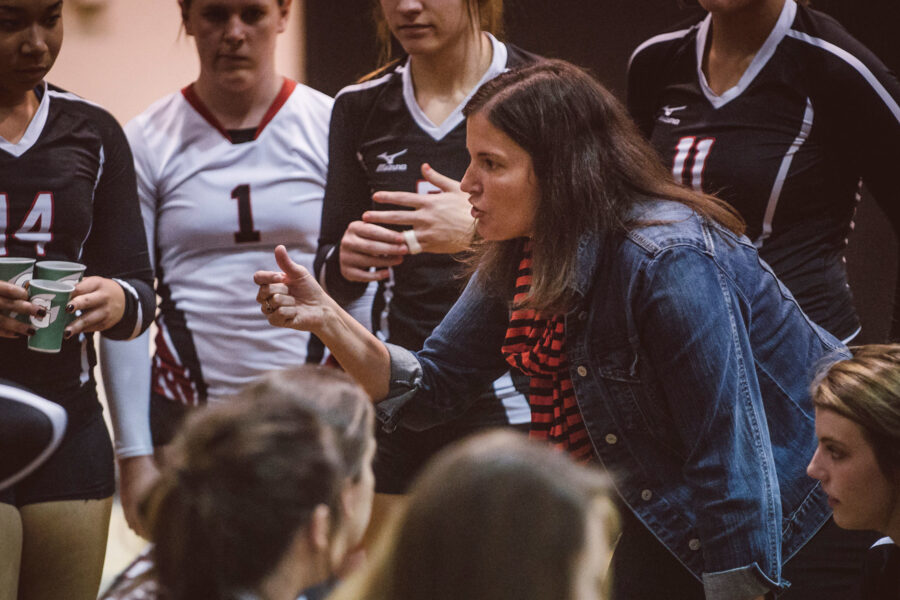Stats are a great way to discover insights you might have previously missed about your team. Here are the most important numbers to keep an eye on.
Hitting Percentage
Kills are a glamour stat, a number fans and players love to monitor. But hitting percentage is the number that should be monitored because it's more telling of overall efficiency.
Hitting percentage is calculated by totaling kills, subtracting the hitting errors, then dividing that number by the total number of attempts.
What makes this stat so important? Many times, the smartest play is hitting a controlled shot instead of swinging for a kill. Picture an out-of-system play with the set being low and off the net. If your team emphasizes kills over hitting percentage, players feel they need to swing for a kill rather than keep the ball in play and trust their defense. This can result in unforced errors and free points for the other team.
Each position should have a different hitting percentage goal based on the quality of sets they’re getting. Here are some marks to shoot for:
- Outside/Opposite Goal: .250
- Middle Blockers Goal: .450
- Team Goal: .300
Serving Percentage
This stat measures your team’s ability to serve the ball in play. It's calculated by taking the number of serves in play, subtracting the serving errors, and dividing by total attempted serves. For developing teams, this is a perfect stat to get a handle on.
An optimal target for a high school team should be a serving percentage above 90 percent with a serving number below two.
Winning the serve-pass game is a recipe for victory. Passing is a key skill because it dictates your team's ability to run a successful offensive. Serving is also a critical part of momentum and overall point scoring. It's very helpful to understand how the two skills are connected.
Pass-quality and serve-quality help you better assess how well your players perform in these skills overall. Although there are a few iterations of passing scales, the passing score will always dictate the serving score. In the examples below, you’ll notice the rating given for a single serve and the result pass add up to a total of four points.
Pass Quality Rating
Use this stat to assess how well an individual player passes a serve. For most club and high school teams, each pass is rated on a scale of 0-3. The quality of the pass is based on the number of front row offensive opportunities available to the setter (e.g., perfect pass, all hitters are available). Both the location and height of the pass are taken into account.
- 0 points = Service reception error
- 1 point = Poor pass or overpass
- 2 points = Good pass
- 3 points = Perfect pass
To improve your team’s passing number, it’s important to eliminate service reception errors and focus on incremental improvements. Your passing number will directly affect your team’s side-out percentage, hitting percentage and chances of winning.
Serve Quality Rating
This one measures the quality of each serve based on the result of the opponent’s pass. The higher the number, the better. The rating scale goes from 0-4:
- 0 pts = Service error
- 1 pt = Opponent perfect pass
- 2 pts = Opponent good pass
- 3 pts = Opponent poor pass or overpass
- 4 pts = Service ace
Elite teams should focus on serve quality rating and aim to get their opponent out of system. The quality of an opposing team’s passes often directly impacts their ability to side-out. Limiting their hitting options by forcing one and two-point passes allows your blockers to focus on fewer attack options, which will improve your defense and your chances of winning more points.
As a coach, your challenge is to figure out a winning formula for your team. This is just a taste of all the volleyball stats that coaches can keep an eye on. But if you start by incorporating these into your review process, you'll get a more objective view of performance and can use that to help your team improve.
